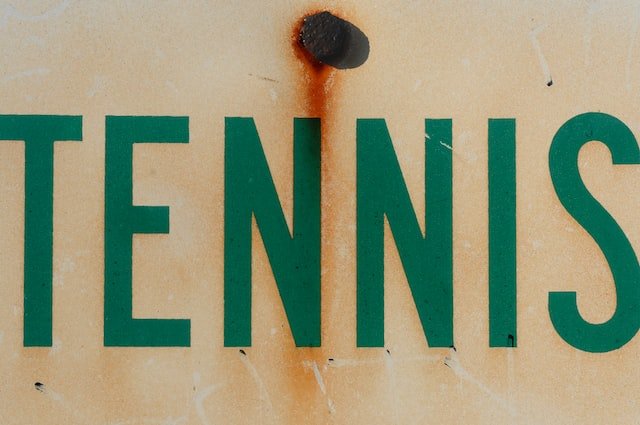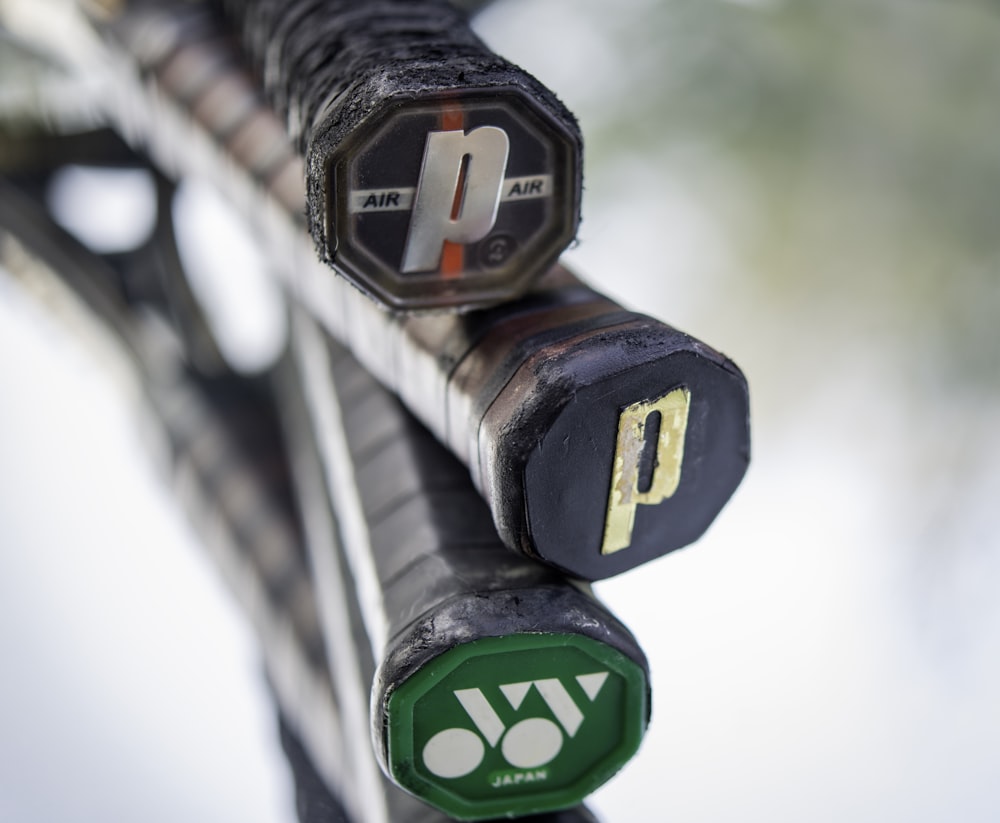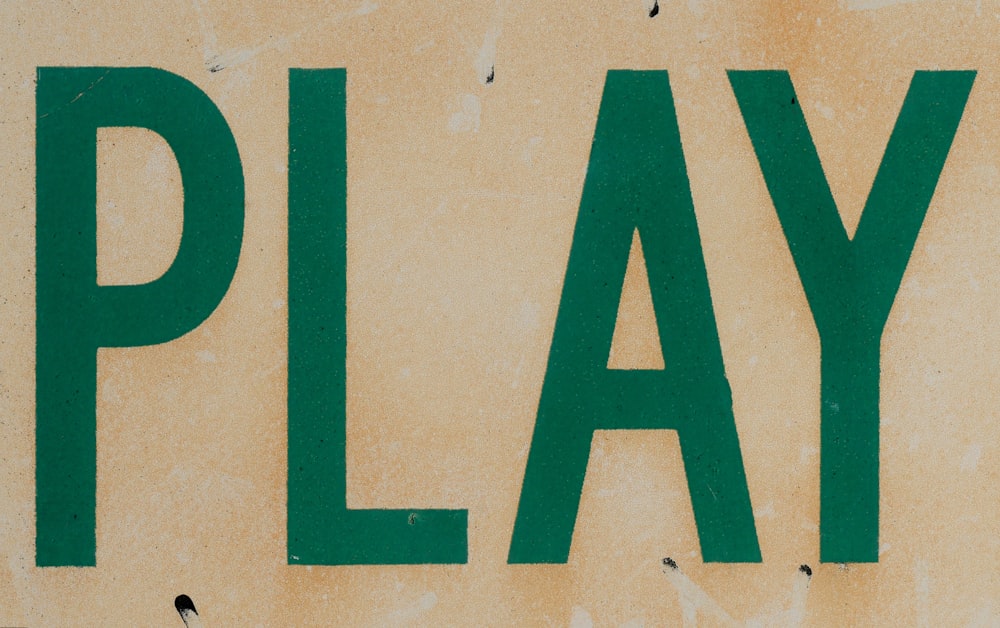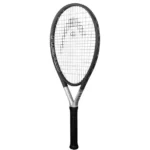The game of tennis is thrilling. The game’s quick pace and the player’s athleticism keep the spectator’s eyes glued from the first point until the last. Its straightforward nature also makes it appealing to generic sports enthusiasts. It is also a fantastic spectator sport, people fill a stadium like a colosseum to watch players do battle.
While its basics are easy to understand, it is not easy to master. In this article, we look to uncover the terms and words that are commonly used in the game. Like all sports, this game has many words and phrases that are unique to it. This ‘jargon’ relates to specific shots, equipment, or aspects of tennis.
By mastering tennis terminology, it allows us to accurately describe what’s happening on and off the court. Without further ado, let’s get started on the list below of the most commonly used tennis vocabulary;
Basic Tennis Terms
Let’s start with generic tennis terms before going into the more technical ones.
Court – it’s where players conduct a tennis match. Its dimensions differ depending on the number of players participating.
Doubles Tennis – It’s a match involving two players per team. The two alleys that run the court’s length are part of the playable field during doubles matches.
Grip – This term pertains to the manner a player holds the racket. Each grip has a corresponding way of striking the ball, hoping it will gain the player an edge. The western grip, the continental grip, and the eastern grip are the most commonly used grips. A grip is sometimes used to describe the outer fabric that covers the handle.
Singles Tennis – One player competes with another, and the playing area is narrower. Singles matches are often the main draw during major tournaments.
Tennis Ball – It’s what players hit from one side of the court to another. While the balls may look the same on the exterior, they do have differences (brand, pressurized vs non-pressurized balls)
Tennis Racquet – It’s what tennis players use to hit the tennis ball. Depending on their weight and the head’s size, there’s a wide array of racquets to choose from. In terms of function, they can be further classified into power, control, and tweener racquets. Some players may also prefer a racquet with a long handle for additional reach.
Strings – The strings form the racquet’s hitting surface, divided into crosses (horizontal) and mains (vertical). Various materials, patterns, and tensions lead to different levels of power and control. A professional tennis player may tweak his strings’ settings to fit his game style better.
Umpire – An individual who is in charge of a professional game.
Line Judge – individuals who are responsible for checking whether a ball is in or out in play.
The Tennis Court
Surface – This term pertains to the type of tennis court. It can either be grass, clay, asphalt, or hard court. Each surface has pros and cons in terms of speed and ball control.
Net – It divides the court’s two sides and it stands three feet high at the center point. Meanwhile, it is three feet, six inches high at the net posts.
Forecourt – The court’s part formed by the two service boxes between the net and the service line.
Backcourt – The area between the baseline and the service line, also known as No Man’s Land.
Service Line – It runs parallel to the net at 21 feet away. This line separates the forecourt and the backcourt.
Service Boxes – The two boxes in the forecourt wherein the served ball must land. These boxes indicate the deuce side and the advantage side.
Centre Mark – The small dash at the baseline’s center that separates the deuce court from the advantage court. It also runs a straight line with the mark that divides the two service boxes.
Deuce Court – It’s where a player serves during a deuce, often identified by the right-hand side of the court for each player.
Advantage Court – It is the left-hand side of the tennis court for each player, wherein a player will serve if there’s an advantage. Also known as the ad court.
No Man’s Land – It refers to the area between the service line and the baseline. It is named as such because of the difficulty in playing a point from that spot.
Tramlines – These are the four-foot, six-inch boxes at the court’s outer part, which are only used in doubles tennis. Therefore, balls that land in these areas during singles matches are considered outside.
Tennis Shots
Forehand – A stroke attempted from a player’s dominant side. A right-handed player will attempt forehands from the right side of his/her body.
Backhand – It’s an attempt from the non-dominant side and can either be a one- or two-handed backhand.
Serve – The motion that starts every point. Serves are typically performed overarm, making it one of the toughest tennis shots to master. Under the rules players have two serves, the first serve and the second serve
Return – When the receiver sends the ball back to the server.
Ace – A direct serve wherein the receiver can’t hit the ball with the racquet.
Topspin – The ball’s motion when hit low to high.
Backspin – The motion forced by hitting the ball high to low.
Approach – The approach shot is the hit before the player runs toward the net for a volley.
Volley – Often played at the net, this shot occurs when a player sends the ball back to his/her opponent before the ball bounces on their side of the court.
Drop shot – A skill shot wherein a player sends a softly hit ball by performing a slice spin.
Lob – It is a shot wherein the ball is hit high over a player. This is often done when the opponent is too close to the net.
Smash – It resembles the approach used in attempting serves but is often executed near the net to end a point.
Tweener – When a player hits the ball between their legs.
Scoring System
Keeping track of the score determines the winners. Therefore, you will hear these words throughout a tennis game.
Point – It is the smallest unit of tennis scoring, starting with a serve. A player wins a single point if the ball bounces twice on their opponent’s side of the court or if the ball does not bounce inside the allowed area of the court. Points are depicted by the numbers 15, 30, and 40. The first number always pertains to the serving player, while the next point is for the receiver.
Deuce – The term used if the points are at 40-40 or 40-all, so as not to confuse it with 30-all because they can sound the same.
Advantage – The player that wins the next point after deuce gains an advantage. It’s called “advantage in” if the serving side scores and “advantage out” if the receiving side scores. The player gets a game if he wins another point after the advantage. When an umpire referees a professional game they usually call the player’s name who has the advantage.
Game – A game is awarded to a player who wins at least four points. The player would need to win more points if the count went on a deuce.
Set – A player wins a set if they get six games with at least a two-game lead. A tiebreak ensues if the tally reaches 6-6, with the winner eventually winning the set 7-6.
Golden Set – This result occurs when a player does not drop a single point to win a 6-0 set. Therefore, this victory requires 24 consecutive points won and a series of good hits. It is very rate!
Tie break – The tie break helps decide the set winner if the competitors have six games apiece. One side wins if they reach seven points while being ahead by at least two. If the score reaches 6-6, the winner will be the first to earn a two-point lead. Players switch serves after the first point and then after every two points.
Championship Tie break – Unlike the typical tie break, players compete in the final set until one side reaches ten points while having a two-point lead. This tiebreak form is popular in doubles matches.
Match – A player/side wins a match if they get the required sets. Female players and doubles competitors often need two of the maximum three sets to win. Meanwhile, men’s singles players need three out of a potential five sets to close out a match in a Grand Slam tournament.
Love – It is the term used for zero or nil, derived from the French word “l’ouef,” which means egg. After all, an egg does look like the number zero.
All – It refers to both sides having the same number of points. Therefore, there could be a 15-all if they’ve won a point each and a 30-all for two points per side.
Straight Sets – This result occurs when one side wins a match without dropping a set. It’s 2-0 for three-set matches and 3-0 for five-setters.
Bagel – It is a slang term for a 6-0 set score.
Bread Stick – The term for describing a 6-1 set score.
Deciding Point – The deciding point takes the place of no-advantage scoring, often seen in professional doubles matches and club-level competitions. As its name suggests, a single point decides who will take the game.
Let – It is the replay of a point with no changes to the score. A let typically occurs when the ball ricochets from the net chord to the proper service box.
Fault – A failed serve, whether the ball goes out of bounds, into the net or outside the correct service box, constitutes a fault.
Foot Fault – It occurs when a player steps on the service line during motion.
Double Fault – It is when a player commits two consecutive faults, resulting in a lost point.
Hold of Serve – It’s another term for winning a game while on serve. Typically, serving allows the player to dictate which part of the tennis court the ball lands, giving them a huge advantage
Break of Serve – It’s when the returner wins a game, hence breaking the opponent’s serve.
Break Point – It is a situation wherein the receiving tennis player can win a game by scoring the succeeding point.
Unforced Error – An error is deemed unforced when a player makes a mistake on their own accord.
Tennis Tactics
Cross court – A shot that traveled diagonally across the court, often used during long rallies.
Rally – Pertains to the successful shots executed by both sides to win a point.
Down the line – A high-risk, high-reward attempt sent parallel to the sidelines.
Passing Shot – A shot that passes a player close to the net.
Moonball – A high and deep shot that loops up and disrupts an opponent’s groove by forcing them to stay near the baseline.
Poach – It often occurs in doubles tennis wherein a player crosses over near the net to steal the ball intended for his partner.
Counterpuncher – A defensive baseliner that allows opponents to control the point.
Serve and Volley – A tactic wherein a player quickly rushes toward the net to attempt a volley after executing a serve. This strategy is ideal on grass courts.
Chip and Charge – This strategy involves hitting a deep slice, forcing the opponent to chase the ball for a return. Players often use it if they want to play closer to the net.
Professional Tennis Tournaments and Events
ATP – It stands for Association of Tennis Professionals, the men’s tennis tour governing body.
ITF – It stands for International Tennis Federation, which oversees Futures and Challenger events.
WTA – It stands for Women’s Tennis Association, the women’s tennis tour governing body.
Masters Event – The second-most prestigious tournament on the professional tennis tour.
Grand Slam – Pertains to the four most prestigious tennis tournaments: the Australian Open, the French Open or Roland Garros, the Wimbledon Championships, and the U.S. Open.
Seeded Player – Also known as a ranked player during tennis events. They get a favorable draw in the earlier rounds, and their number depends on the draw’s size.
Wildcard – A player who gained direct tournament entry without competing in the qualifying rounds.
Walk-over – A result awarded to a player when the opponent withdraws from the match, typically due to injury.
Lucky loser – A player that lost the last qualifying round but got a spot in the tournament after somebody else begged off at short notice.
Time violation – An infraction given to players who take a long time to prepare between points. The allowed time typically ranges from 20 to 25 seconds.
Protected ranking – A player returning from injury may use a protective ranking, allowing them to use their average ranking before the injury occurred to get a favorable draw.
Final Thoughts
There are many more words and expressions in this wonderful game, the above are the most commonly used in day-to-day conversations in the game.






Comments are closed.